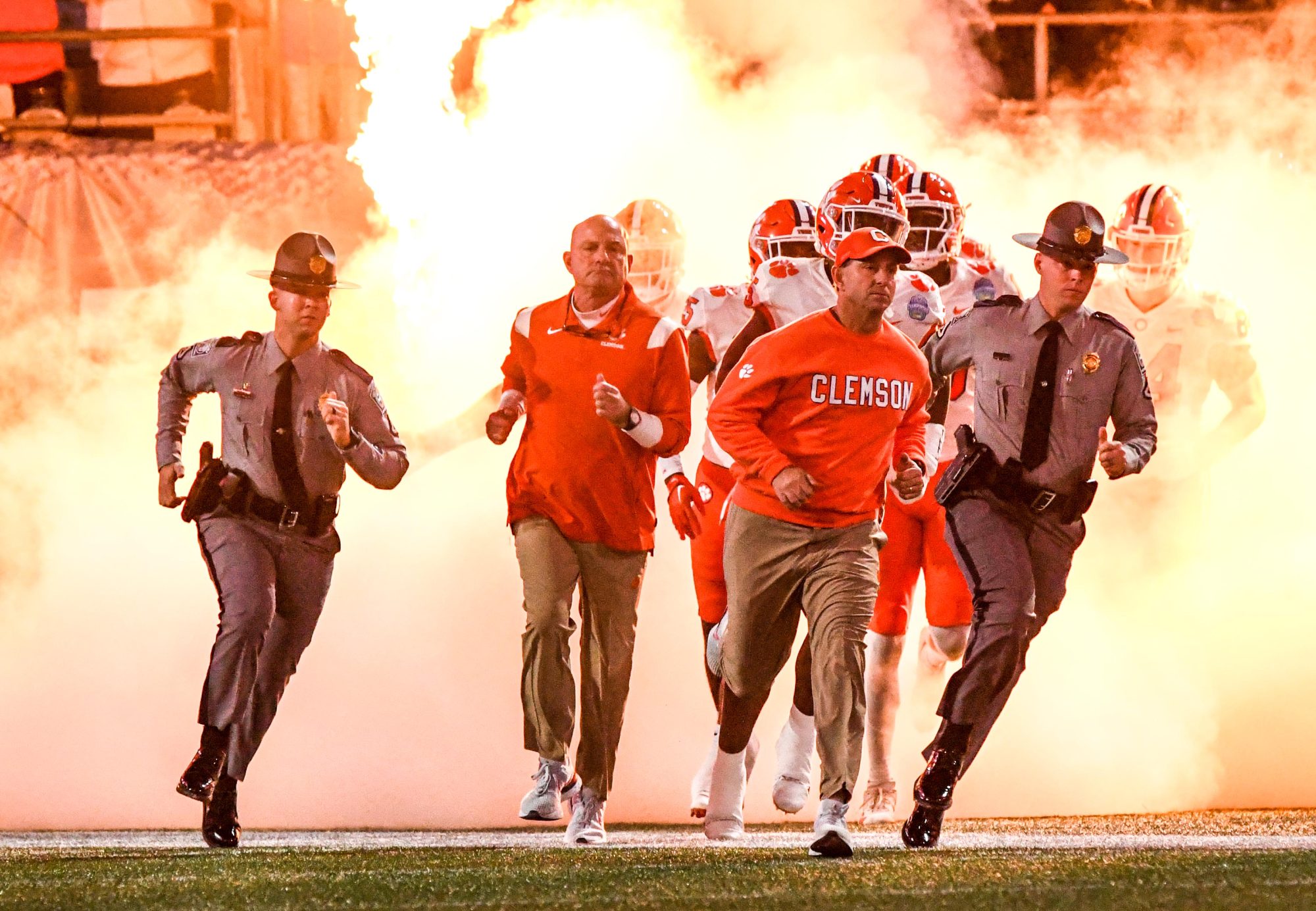...Kessler spoke deeply about athletic department finances, outlined the four most likely possibilities of a new college model and repeatedly declined to discuss any potential settlement.
However, for months now, the NCAA and power conferences have been engrossed in settlement discussions among themselves — not a well kept secret in the sports world. A settlement is a two-fold issue: Schools are responsible for likely more than $1 billion in back pay, plus must agree to a future compensation model for athletes.
Settlement discussions have ranged widely, and the details of such have mostly been kept private. But several athletic administrators, briefed on the matter, say they are preparing to share revenue with athletes as part of a potential settlement — an outcome much preferred over the lingering possibility of athlete employment.
Figures are murky and are steadily evolving, but many administrators believe that any settlement agreement comes with an annual per-school revenue-sharing figure of $15-20 million.
Defendants in the case include the five power leagues and the NCAA as a whole. What about the little guys? Most Group of 5 and FCS football programs do not generate a profit and their athletic departments are often subsidized by university and student fees.
Kessler’s focus is on the top 70 or so programs, many of which generate upward of $100 million in ticket sales, television contracts and donations — a majority of it related to football.
“You really have to think about [Power 4] as different,” Kessler said. “The reason we get tied in knots is because we conflate those schools who have developed these gigantic independent commercial businesses with the schools who are still just educational institutions with extracurricular activities. When you try to come up with one rule for all, you go crazy. You have to look at the schools differently. For the ones with the money, there is plenty of money to compensate the athletes and share it with the women’s sports.
...Most athletic departments use profit from their one true revenue-generating sport (football) to subsidize the rest of the athletic department. That means funding money-losing Olympic sports and paying for football expenses, such as travel, game-day operations and athlete support in the way of dining, healthcare and scholarships.
But over the years, fueled by multi-million dollar television contracts, athletic departments at the highest level became flush with cash. Unable to directly compensate athletes and situated in a competitive environment, departments pumped the excess cash into gaudy facility projects and million-dollar coaching and administrative salaries in an effort to compete with their rivals on the recruiting trail.
This resulted in schools reporting a loss or break-even figure in their annual financial documents. Their argument against an employment or revenue sharing model is simple: If profits are shared with athletes — women athletes, too, as required by Title IX — how then are the other sports funded?
“If you are paying your athletic director $3.5 million because you have the money and you [report] that you have a $100,000 loss, you’re making money!” Kessler bellowed.
He cited the salary of Alabama’s strength coach, David Ballou, who earns $950,000.
“If [he] only made $500,000 and those athletes, largely Black athletes on the football team, got some of that money, no one is going to think that is a bad thing — except the people who are trying to hold up and profit from the system,” he said.
Kessler also questions why football players should miss out on compensation because they hold the responsibility of funding the department with the revenue in which they generate.
“They should not receive anything so that the money can go to the golf and tennis team?” Kessler asked. “Think of the composition of those teams and think of the composition of the teams that are giving up the money. What is that about? Why is it their responsibility to do that?”
From his pulpit Thursday, Kessler encouraged college leaders to lift the NCAA’s remaining amateurism policies prohibiting schools from directly compensating athletes. And yet, as their bedrock of amateurism crumbles, industry executives have not yet pursued the first phase of Baker’s proposal, which permits schools to pay NIL directly to athletes.
So many pressures are pushing high-level college sports from amateurism to a more professionalized outfit. The long-standing amateurism facade is cracking and crumbling, bludgeoned by the courts, state lawmakers and employment entities.
For instance, just in the past five months, court rulings have permitted athletes to transfer an unlimited amount without penalty and OK'd booster-led NIL collectives to induce high school prospects and those from other universities. The NCAA has paused all NIL investigations.
There are four ongoing cases seeking to deem athletes as employees. In addition to the House case, Kessler is leading two more costly antitrust suits, including Hubbard vs. the NCAA with a December trial date.
And various state laws are prohibiting NCAA enforcement and permitting schools to have more of a role in compensating athletes, none more than Virginia, whose law takes effect July 1 — the latest trigger, like California and Florida before it, to potentially exact change.
“Right now, President Baker agrees that schools should pay directly NIL. Our lawsuit says these schools should pay NIL directly and the state of Virginia now agrees. What are we waiting for?” Kessler said. “There wouldn’t be [NIL] collectives if the rules didn’t prohibit the institutions from being involved in providing the NIL payments. Only reason collectives were formed is to try to comply with the ban on that. Everybody’s thought about it and said, ‘Maybe that’s not a good thing,’ and it would be better to have the schools directly do this instead of this bizarre system.”
So how does this end? What’s the new model look like?
Kessler detailed four possibilities:
1. Conferences: NCAA economic regulations around compensation are eliminated and the individual conferences compete with each other by setting their own regulations and rules, creating “one marketplace standard” for athlete compensation.
2. Employment: Athletes are made employees or, at the very least, they unionize in an effort to collectively bargain with their school or conference.
3. Revenue sharing: A settlement from the House case produces a revenue-sharing model for athletes.
4. Congress: The federal government takes action with legislation that grants legal protection to the NCAA and potentially creates a carve-out for college athletes to earn compensation in a more regulated way.
“I think that is the least likely way,” Kessler said. “Until Congress can agree on anything else, I’m not sure they’re going to agree on anything that would be good for college sports.”
There is, of course, another option: The NCAA and college conferences do nothing, continue to get litigated in court and eventually find themselves bankrupt. That choice, though, is well past its expiration date.
“Change is here. It is not going to stay the same. It’s already different,” Kessler said. “The best thing that everybody should think about is, ‘OK, how can we make this change the most positive change for everyone involved?’
“Stop living a vision that doesn’t exist. Face the realities here, because it’s going to happen. The question is, are you going to be part of that change or not be part of that change?”
A deadline looms. The House case goes to trial in January.
After his presentation, Kessler hurried through the auditorium, his luggage in tow, shuffled down the stairs and, before exiting the doors, shared one more comment.
“If we get to December and nothing else has happened,” he said smiling, “we are going to win before a jury in December and we are going to win before a jury in January.”



